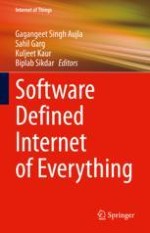2022 | OriginalPaper | Buchkapitel
13. Stealthy Verification Mechanism to Defend SDN Against Topology Poisoning
verfasst von : Bakht Zamin Khan, Anwar Ghani, Imran Khan, Muazzam Ali Khan, Muhammad Bilal
Erschienen in: Software Defined Internet of Everything
Aktivieren Sie unsere intelligente Suche, um passende Fachinhalte oder Patente zu finden.
Wählen Sie Textabschnitte aus um mit Künstlicher Intelligenz passenden Patente zu finden. powered by
Markieren Sie Textabschnitte, um KI-gestützt weitere passende Inhalte zu finden. powered by
